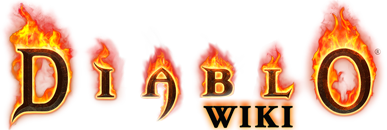(→Items) |
|||
| Line 40: | Line 40: | ||
* [[Gems]] |
* [[Gems]] |
||
| − | More categories were introduced in [[Lord of Destruction (game)|Diablo II |
+ | More categories were introduced in [[Lord of Destruction (game)|Diablo II: Lord Of Destruction]]: |
* [[Elite Items]] |
* [[Elite Items]] |
||
| Line 53: | Line 53: | ||
* [[Pants]] |
* [[Pants]] |
||
* [[Runes]] have simplified names. |
* [[Runes]] have simplified names. |
||
| − | |||
==Item Generation== |
==Item Generation== |
||
Revision as of 16:55, 2 October 2008
Items are objects that have various purposes. They are the mainstay that helps the player customize his/her character. Many types of items can be equipped by the player character as weapons or armor. Weapons can be melee, ranged or thrown.
Characteristics
Items have the following in common:
- They can be traded with trading NPCs (with the exception of Quest Items);
- They can be held in a character's inventory;
- They can be dropped by killed monsters on the ground or by opening chests and breaking containers;
- They can be put on the ground;
Items are the various tools and trinkets that can be found, collected, used and sold by the player character. They are found by:
- Killing monsters
- Opening chests
- Breaking containers
- Crafting in the Horadric Cube
Items
The first items were seen in Diablo I:
There are many different categories of items introduced in Diablo II:
More categories were introduced in Diablo II: Lord Of Destruction:
Two new inventory slots were introduced for Diablo III:
Item Generation
In Diablo II, each item was given a certain Item Level which was stored in a huge database in the game files. Whenever a monster is killed, the game looks at the Monster Level and the Area in which the monster was killed. Then, the game looks at the item tables and rolls an item to drop. The magical attributes are also chosen by rolling all the Magical Prefixes and Suffixes. Then, the item is dropped on the ground. When opening a chest or breaking a container, a similar procedure is carried out but using only the Area Level in the calculation. Unique and Champion monsters have a boost to their monster level. So, they have better than normal drop rates.
| |||||
